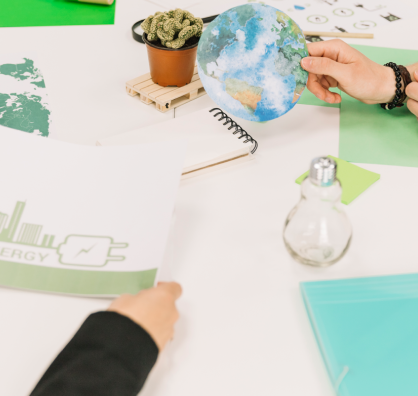[vc_row css=”.vc_custom_1565542682041{margin-right: 0px !important;margin-left: 0px !important;}”][vc_column css=”.vc_custom_1565542696462{padding-right: 0px !important;padding-left: 0px !important;}”][vc_single_image image=”7663″ img_size=”1440×300″ el_class=”banner-event”][/vc_column][/vc_row][vc_row css=”.vc_custom_1565542751414{margin-right: 0px !important;margin-left: 0px !important;}”][vc_column width=”1/4″][/vc_column][vc_column width=”1/2″ css=”.vc_custom_1565622195563{padding-bottom: 50px !important;}”][vc_column_text el_class=”title-event”][post_title][/vc_column_text][vc_column_text el_class=”date-venue-news”]Jakarta, 18 September 2020[/vc_column_text][vc_column_text el_class=”text-par-news”]Last Friday, ACCEPT organised the first interactive internal sharing session called “Policy Pathways to Paris Agreement Goals”. The session’s objective is to give a better understanding of the policy integration effect to the Paris Agreement Goals. This was done by a series of scenarios simulated by using En-ROADS. Each participant was given a chance to use a web-based software to simulate each unique scenario based on their most fitting opinions and thoughts. On this occasion, the whole session was guided by Dr. Hoyyen Chan.
The sharing session began with an explanation of how various types of integrated emission reduction policies could impact the Paris Agreement Goals, which was the rise of temperature must not exceed 1.5 to 2 degrees Celsius by 2050. Dr. Hoyyen briefly elaborated En-ROADS as an accurate tool developed by MIT under the climate interactive initiatives, although mainly used for capacity building and not for publication purposes. The software basically takes account of several variables to forecast the result such as the demand (Transportation, Buildings, and Industry sectors), fiscal policy in supply (Renewables, Oil, Natural Gas, New Technology, Bio-energy, and Carbon Price), and the land use (Deforestation and Methane Levels).
 Participants in In-house Sharing Sessions 4 Phase 2 (Policy Pathways to Paris Agreement Goals)
Participants in In-house Sharing Sessions 4 Phase 2 (Policy Pathways to Paris Agreement Goals)
In the next part, the participants were asked to simulate the first scenario of policy with a goal to reach only 2 degrees temperature rising by adjusting the majority of the variables excluding coal, population, and economic growth. After the participants finished working on this scenario, Dr. Hoyyen gave recommendations regarding the key points that the policymakers ought to take, namely: (1) Start with controlling the demand; (2) Avoid relying on the unknown like New Technology (Nuclear Fission, Carbon Capture Storage/CCS); (3) Each policy needs to be offset if necessary (E.g. Increasing the supply of Bio-energy needs to be offset by afforestation).
After giving a brief review, Dr. Hoyyen invited the participants to modify their scenario to make it more logical and suitable without any specific temperature target. But this time the participants can modify CCS in the coal section while keeping the population and economic growth at the default level. Right after the participants finished editing their scenarios, Dr. Hoyyen used one of the participants’ scenario as an example to be reviewed in the next section. The key points she emphasized were: (1) There are no right and wrong scenarios, the important aspect is knowing how the combination of each policy choices affect the end temperature and emission level, (2) If we stay on our comfort level, there is a huge possibility of not reaching the targeted temperature rise.
Friday’s afternoon sharing session was ended with a group photo. It was a fruitful and insightful session, which could raise our awareness to mitigate climate change seriously and not wasting anymore precious seconds to sustain the next generations.
[/vc_column_text][vc_column_text el_class=”photo-caption-news”](R/WS/RS)[/vc_column_text][vc_tweetmeme][/vc_column][vc_column width=”1/4″][/vc_column][/vc_row]











